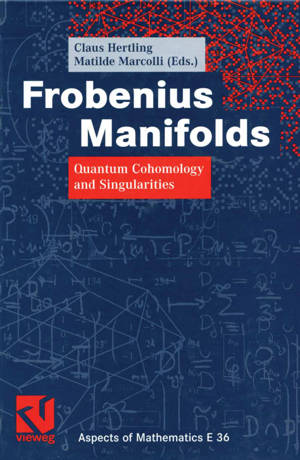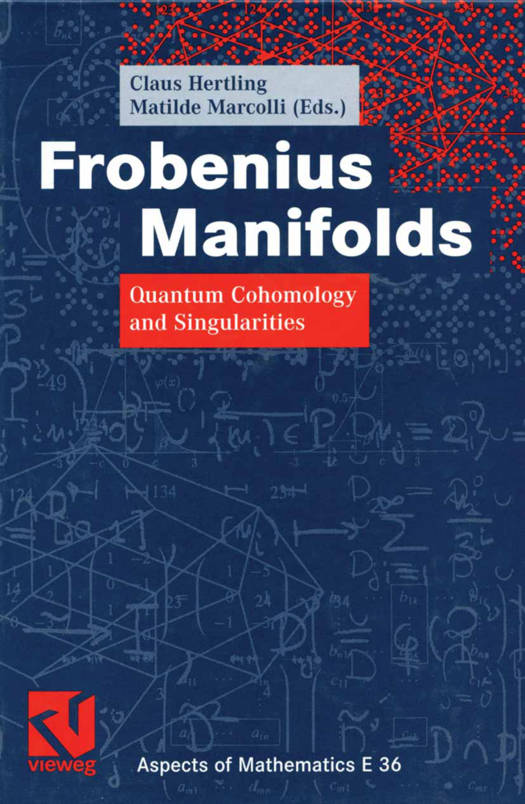
Bedankt voor het vertrouwen het afgelopen jaar! Om jou te bedanken bieden we GRATIS verzending (in België) aan op alles gedurende de hele maand januari.
- Afhalen na 1 uur in een winkel met voorraad
- In januari gratis thuislevering in België
- Ruim aanbod met 7 miljoen producten
Bedankt voor het vertrouwen het afgelopen jaar! Om jou te bedanken bieden we GRATIS verzending (in België) aan op alles gedurende de hele maand januari.
- Afhalen na 1 uur in een winkel met voorraad
- In januari gratis thuislevering in België
- Ruim aanbod met 7 miljoen producten
Zoeken
Frobenius Manifolds
Quantum Cohomology and Singularities
€ 105,59
+ 211 punten
Omschrijving
Frobenius manifolds are complex manifolds with a multiplication and a metric on the holomorphic tangent bundle, which satisfy several natural conditions. This notion was defined in 1991 by Dubrovin, motivated by physics results. Another source of Frobenius manifolds is singularity theory. Duality between string theories lies behind the phenomenon of mirror symmetry. One mathematical formulation can be given in terms of the isomorphism of certain Frobenius manifolds. A third source of Frobenius manifolds is given by integrable systems, more precisely, bihamiltonian hierarchies of evolutionary PDE's. As in the case of quantum cohomology, here Frobenius manifolds are part of an a priori much richer structure, which, because of strong constraints, can be determined implicitly by the underlying Frobenius manifolds. Quantum cohomology, the theory of Frobenius manifolds and the relations to integrable systems are flourishing areas since the early 90's. An activity was organized at the Max-Planck-Institute for Mathematics in 2002, with the purpose of bringing together the main experts in these areas. This volume originates from this activity and presents the state of the art in the subject.
Specificaties
Betrokkenen
- Uitgeverij:
Inhoud
- Aantal bladzijden:
- 378
- Taal:
- Engels
- Reeks:
- Reeksnummer:
- nr. 36
Eigenschappen
- Productcode (EAN):
- 9783322802385
- Verschijningsdatum:
- 10/01/2012
- Uitvoering:
- Paperback
- Formaat:
- Trade paperback (VS)
- Afmetingen:
- 170 mm x 244 mm
- Gewicht:
- 625 g

Alleen bij Standaard Boekhandel
+ 211 punten op je klantenkaart van Standaard Boekhandel
Beoordelingen
We publiceren alleen reviews die voldoen aan de voorwaarden voor reviews. Bekijk onze voorwaarden voor reviews.








